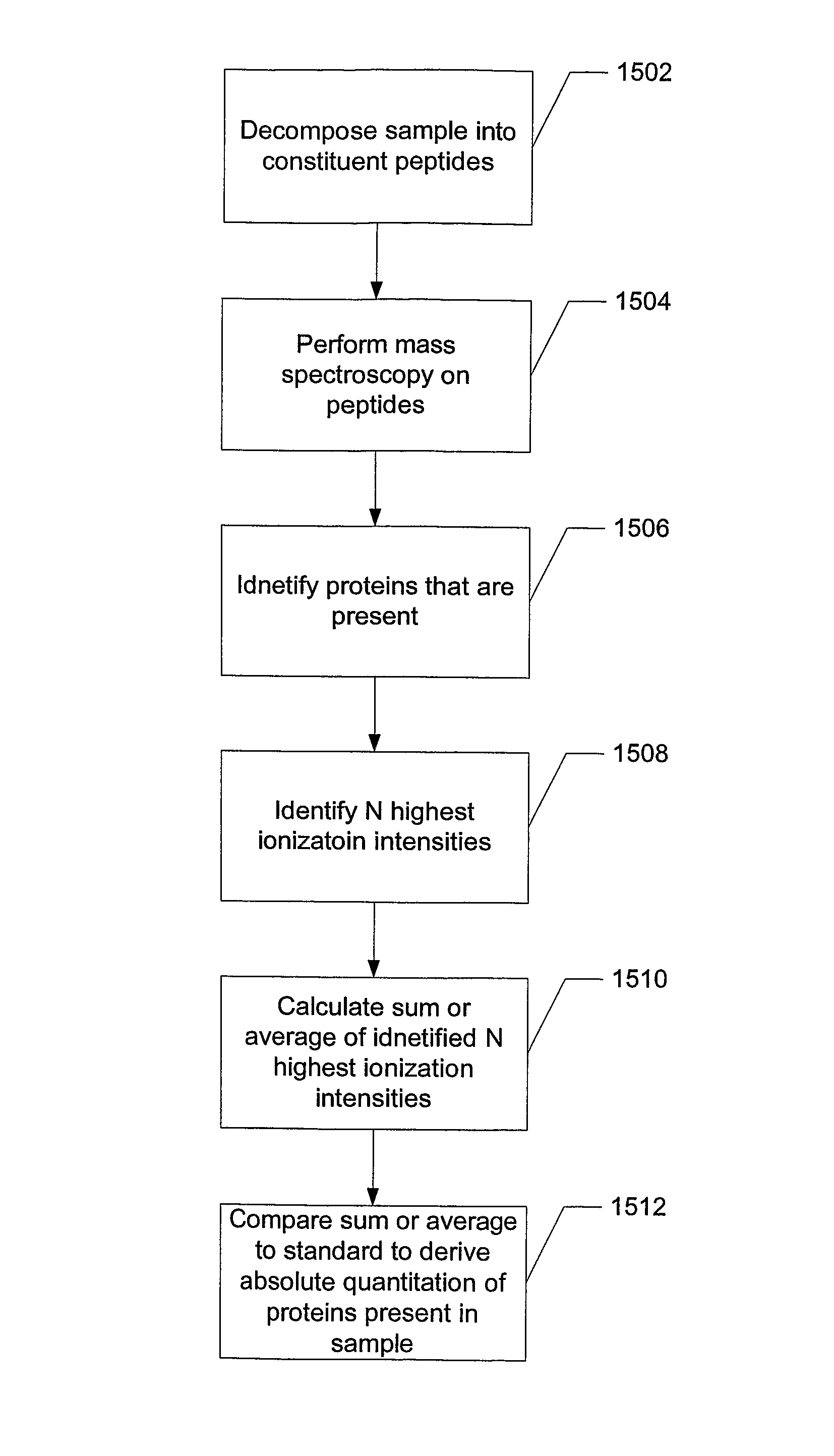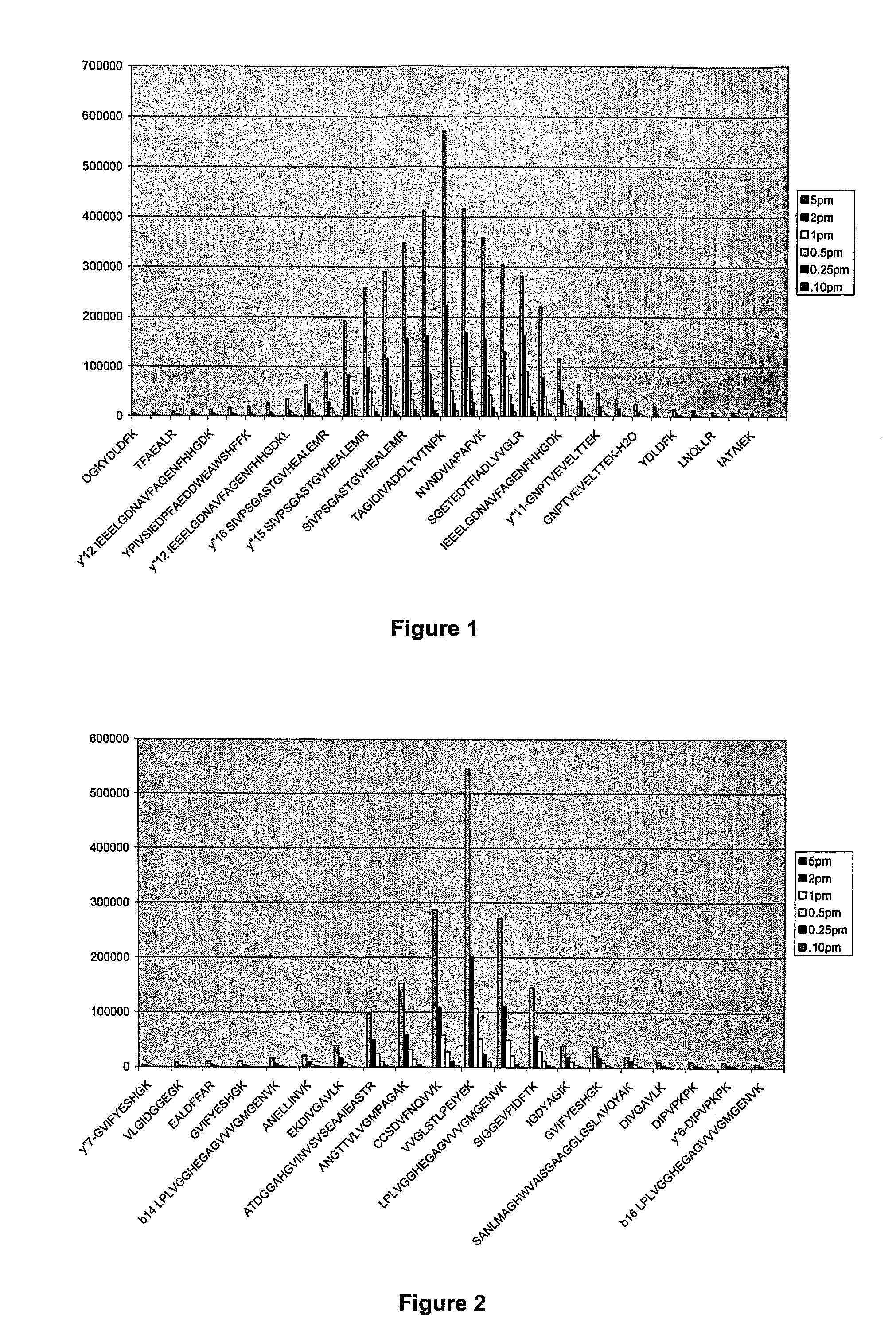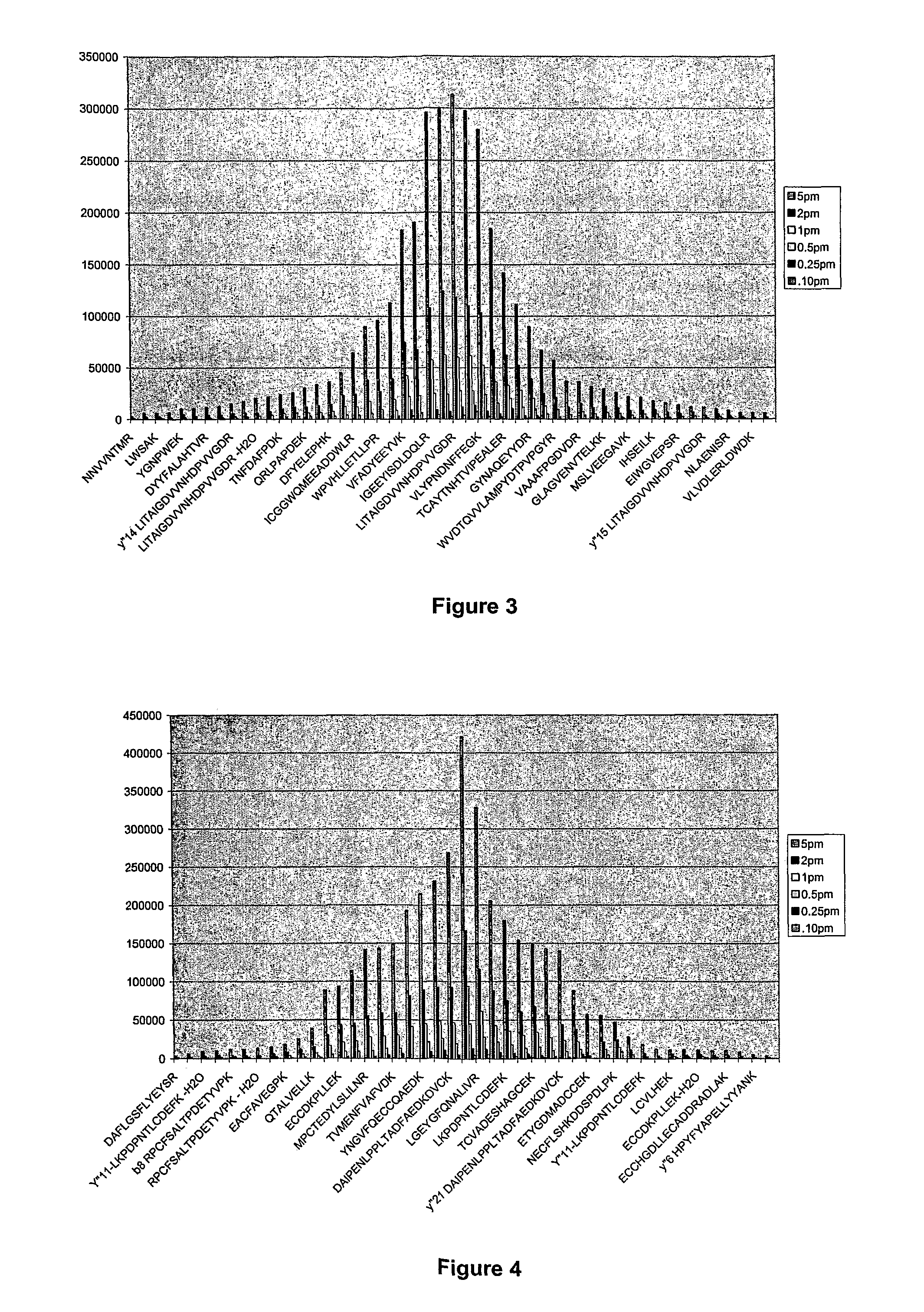System and method for absolute quantitation of proteins using LC/MS
a protein and absolute quantitation technology, applied in chemical methods analysis, instruments, material analysis, etc., can solve the problems of affecting the subject's health, requiring extra steps, and causing dilution
- Summary
- Abstract
- Description
- Claims
- Application Information
AI Technical Summary
Benefits of technology
Problems solved by technology
Method used
Image
Examples
Embodiment Construction
[0037]Proteins are made of a linear sequence of amino acids that together produce a large, single polypeptide. Typically, during protein quantitation studies, the original protein molecules are chemically or enzymatically degraded into smaller cleavage peptides (e.g., tryptic peptides). For example, digestion using the enzyme trypsin breaks proteins into tryptic peptides by cutting the protein on the C-terminal side of the amino acids lysine and arginine.
[0038]Although the resulting peptides can be analyzed using a mass spectrometer, in general, because different peptides have different ionization efficiencies the signal response of the constituent peptides are not the same for any particular protein. That is, some peptides are more receptive to protonation / ionization than others. However, for any given protein the signal response of the tryptic peptides can be ordered to exhibit a Gaussian distribution.
[0039]As a result, the relative abundance of a protein can be determined by comp...
PUM
| Property | Measurement | Unit |
|---|---|---|
| liquid chromatography | aaaaa | aaaaa |
| mass spectrometry | aaaaa | aaaaa |
| concentrations | aaaaa | aaaaa |
Abstract
Description
Claims
Application Information
 Login to View More
Login to View More - R&D
- Intellectual Property
- Life Sciences
- Materials
- Tech Scout
- Unparalleled Data Quality
- Higher Quality Content
- 60% Fewer Hallucinations
Browse by: Latest US Patents, China's latest patents, Technical Efficacy Thesaurus, Application Domain, Technology Topic, Popular Technical Reports.
© 2025 PatSnap. All rights reserved.Legal|Privacy policy|Modern Slavery Act Transparency Statement|Sitemap|About US| Contact US: help@patsnap.com



